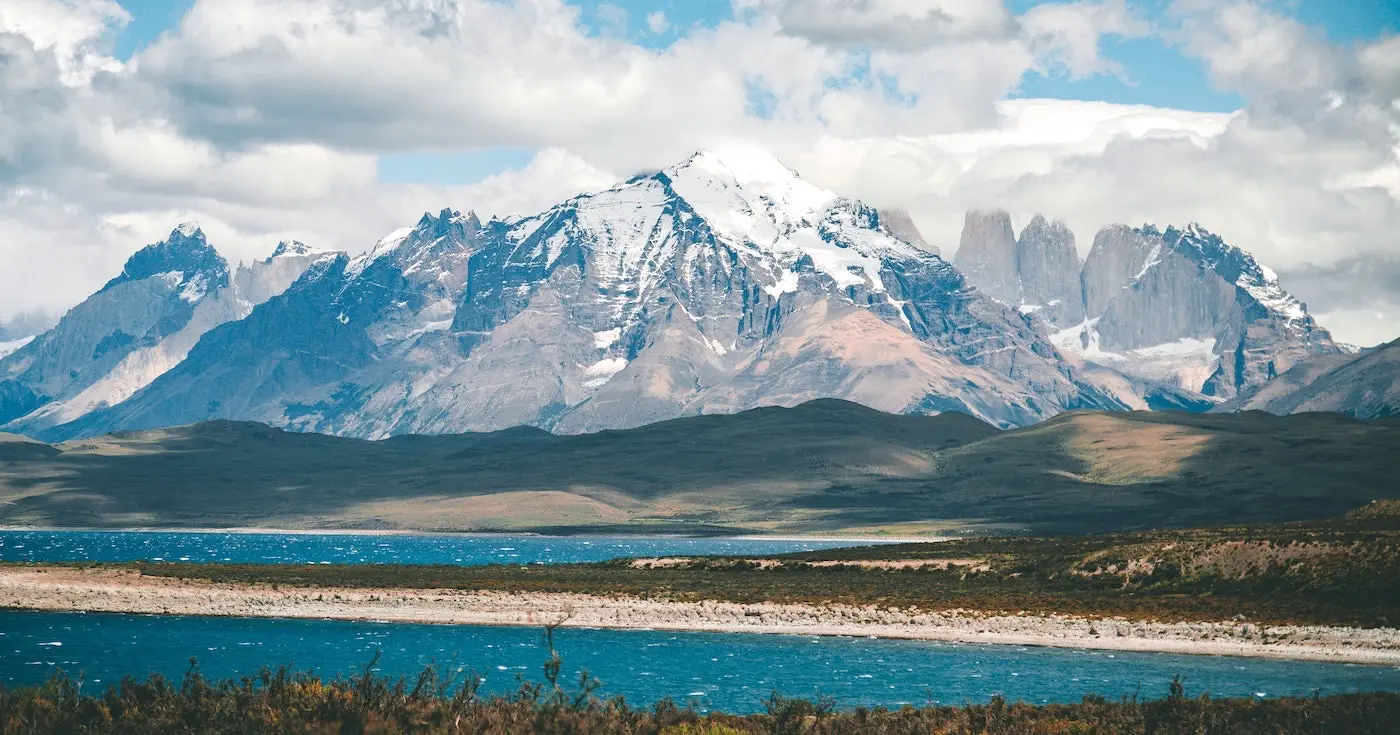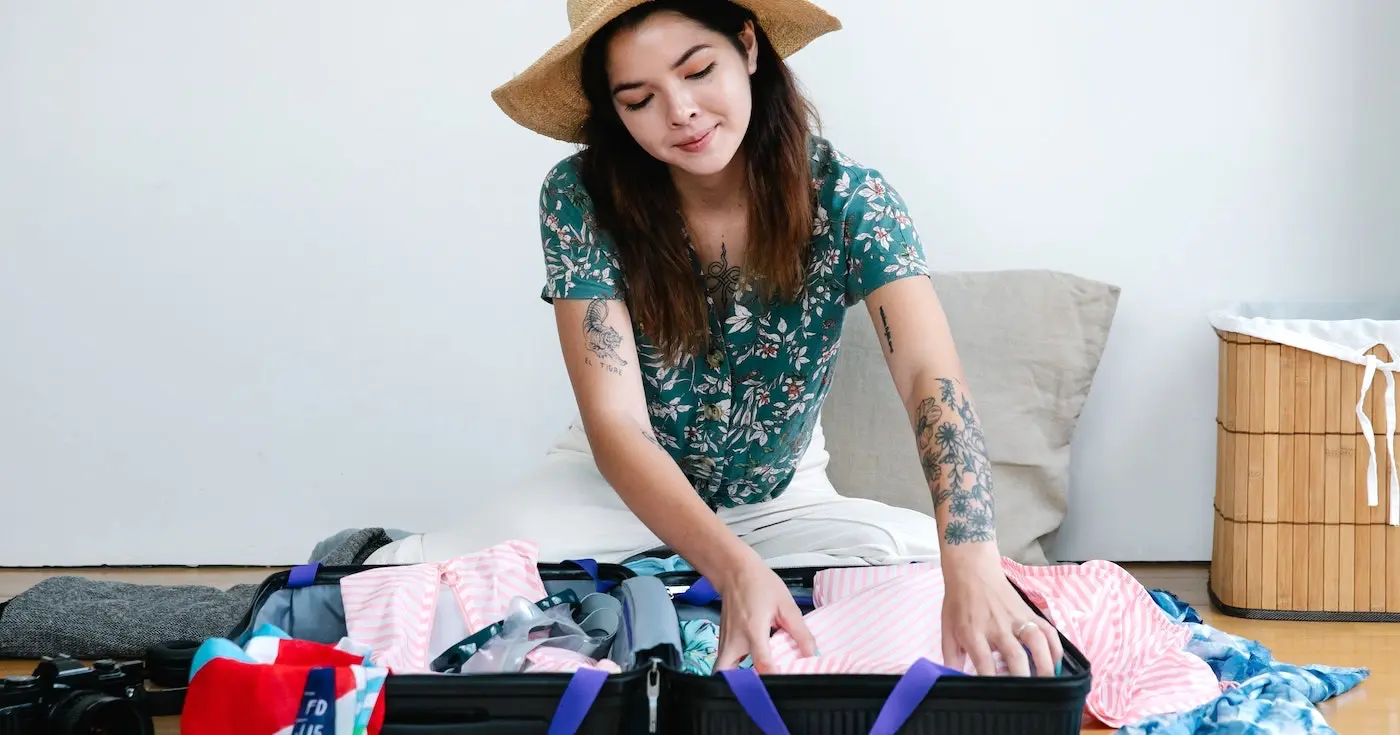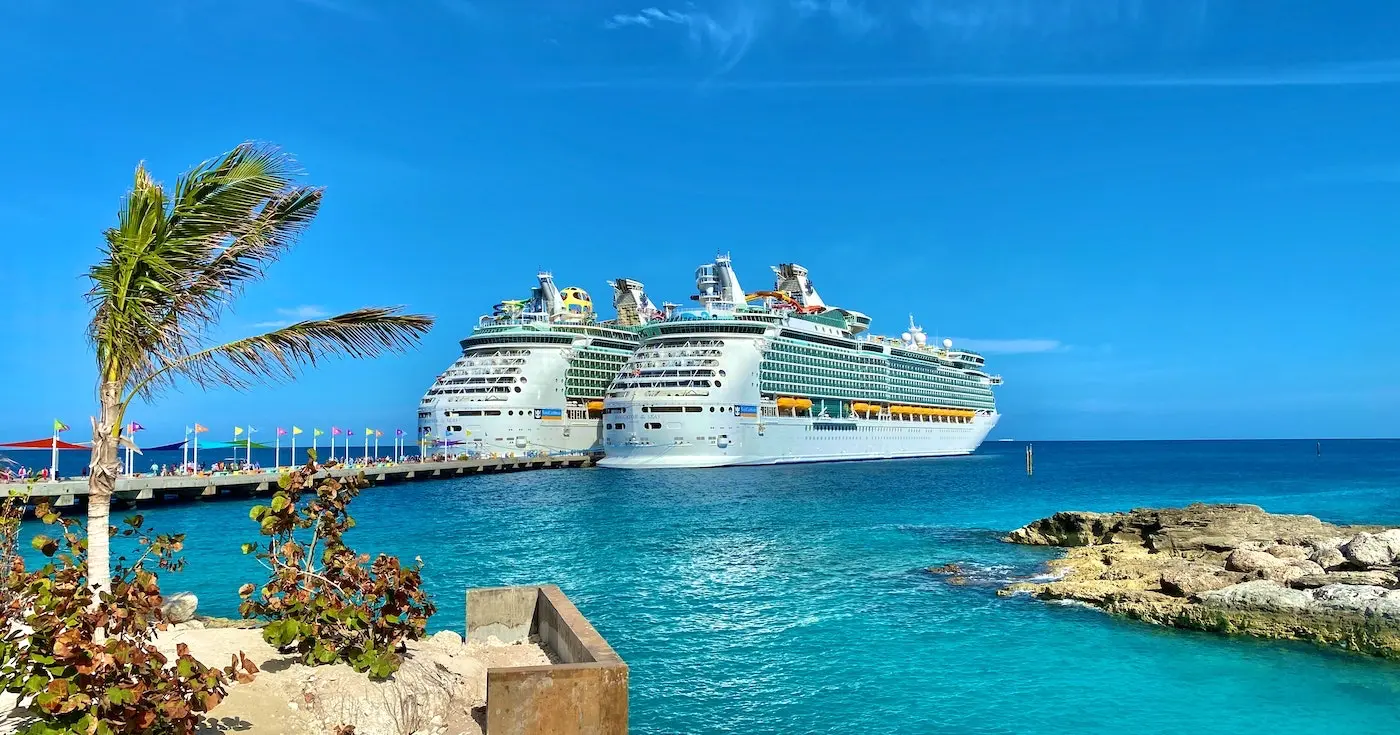Patagonia is a paradise for backpackers and hikers, offering diverse natural landscapes ranging from glaciers to mountains to forests. However, the weather in Patagonia is quite unpredictable and can change dramatically within hours. Therefore, it is crucial to be well-prepared and have a well-thought-out packing list for your Patagonia backpacking trip. This list is intended for individuals who plan on hiking in Patagonia and will provide a comprehensive guide for what to pack.
Hike Light
When preparing for a Patagonia hiking gear list, it is essential to pack light. Carrying unnecessary items will only add to the weight of your backpack and can make your journey more tiring and uncomfortable. It is crucial to prioritize and pack only the essentials.
Why Hike Light
Hiking light offers many benefits. It reduces the strain on your body, allows you to move more quickly, and gives greater options in picking a campground. Moreover, hiking light will also save you money on airplane baggage costs.
Let’s Get Started with the List
Patagonia Hiking Packing List with tips
Here is a basic Patagonia hiking packing list to help you prepare for your trip:
Following categorized short list is with tips, you can view full list with just items towards the end of the article.
Bags
Backpack/Rucksack
A good quality backpack or rucksack is important for carrying your belongings during your hiking journey. Look for a backpack with sturdy straps, a comfortable waist belt, and ample storage space.
Suitcase
It is recommended to leave your suitcase at the hotel and carry only the necessities in your backpack or rucksack.
Sleeping Pad and Sleeping Bag
A sleeping bag is another important component in the list of Patagonia backpack luggage. It provides insulation to keep you warm while sleeping outdoors. It’s important to choose a sleeping bag that suits the temperature of the environment you’ll be camping in.
Clothing
When going camping or backpacking, it’s important to dress appropriately for the environment and the weather conditions.
Base Layer
The base layer is the first layer of clothing worn against the skin. Synthetic materials like polyester and nylon or natural fibers like wool and silk are good options for a base layer. Base layers come in different weights, from lightweight for warmer weather to heavier weights for colder temperatures.
Thermals
Thermals are a type of base layer that is designed to provide extra warmth in cold weather. They are made of a thick, insulating material like fleece or wool and are often worn under other layers of clothing.
Long Underwear
Long underwear is typically made of thin, lightweight material like silk or synthetic fibers and can be worn under other layers of clothing.
Synthetic or Wool Shirt
A synthetic or wool shirt is a good choice for a mid-layer.
Bra
A well-fitting bra is important for women when participating in outdoor activities. It should be comfortable, provide good support, and be made of moisture-wicking material.
Bikini/Swimming Suit
If you’re planning on swimming or participating in water activities, it’s important to bring a bikini or swimsuit. Look for one that is made of quick-drying material and fits comfortably.
Insulating Layer
Fleece tops are a popular choice for this layer as they are lightweight and provide good insulation. Other options include wool sweaters or insulated jackets.
Shell Layer
The outermost layer of clothing is the shell layer. This layer is meant to protect you from air, rainfall, and snow.
Waterproof Jacket
A waterproof jacket is an important piece of gear for camping or backpacking in wet weather.
Down Jacket
A down jacket is an excellent choice for an insulating layer in cold weather. Look for a jacket with a high fill power to ensure maximum warmth.
Rain Pants
Look for pants made of waterproof and breathable material to keep you dry and comfortable.
Bottom Wears
Hiking Pants
Patagonia has a variety of hiking trails that require durable hiking pants. Some popular options include the Patagonia TorrentShell Pants or the Prana Stretch Zion Pants.
Trousers
For cooler weather or more formal occasions, you may want to pack a pair of trousers. These can be made from a variety of materials, but wool or synthetic blends tend to be the most versatile and comfortable.
Shorts
If you’re planning on hiking in warmer weather or participating in water activities, it’s a good idea to pack a pair of shorts. Look for shorts that are quick-drying and have pockets for storing essentials.
Leggings
If you love to do any yoga or other low-impact activities, leggings can be a comfortable and versatile option.
T-shirts or Lightweight Shirts
When it comes to tops, it’s important to have a variety of options to accommodate different weather conditions and activities. Pack a mix of short-sleeve and long-sleeve t-shirts and lightweight shirts that can be layered for warmth.
Warm Clothes
Wool Socks
Patagonia can get cold, so try to pack warm socks to keep your feet warm.
Gloves
If you’re planning on hiking in colder weather or participating in winter sports, it’s a good idea to pack a pair of gloves.
Scarf
A scarf can be a versatile accessory that can help keep you warm and protect your face from wind and sun.
Headwear
Warm Beanie
One of the most special pieces of headwear for Patagonia backpacking packing list for your trip. The temperatures can drop significantly at night and even during the day, especially in higher altitudes. A Beanie will help to keep your head and ears protected from the cold, preventing heat loss and keeping you comfortable.
Buff Scarf/Headband:
A Buff scarf or headband is good for headwear that can serve many purposes on your Patagonia backpacking trip. It can be worn as a scarf to keep your neck warm, or it can be pulled up to cover your mouth and nose in dusty or windy conditions. It can also be worn as a headband to keep your hair out of your face while hiking.
Cap
It will help to shield your face and eyes from the sun, reducing the risk of sunburn and eye damage. Additionally, a cap can help to keep your head cool in warmer temperatures, reducing the risk of overheating.
Footwear
The right footwear is necessary when hiking through Patagonia’s rugged grounds. You should have at least two pairs of shoes:
Hiking boots
A sturdy, waterproof pair of hiking boots or shoes
Flip-flops
A pair of flip-flops for camp or river crossings.
The hiking boots should provide excellent ankle support, have a good grip, and be waterproof to keep your feet dry and warm during rainy weather or river crossings.
Tent
Your tent is your home away from home during your backpacking trip. A high-quality, lightweight tent that can withstand harsh winds and rain is crucial. Ensure it’s large enough to accommodate you, with enough headroom to sit up comfortably.
Food
While there are plenty of markets and grocery stores in Patagonia, it’s best to pack some non-perishable food items. Here are some suggestions:
Patagonia Backpacking Food List
Trail Mix
It’s a great source of protein, healthy fats, and carbohydrates that will keep you energized during your hikes.
Dehydrated Meals
When planning a backpacking trip in Patagonia, it is important to consider the meals you will be taking along. Dehydrated meals are lightweight, easy to prepare, and can be found at outdoor and camping stores.
Instant Oatmeal
A filling and nutritious breakfast option that can be prepared quickly and easily.
Energy Bars
These are a great snack option that can be eaten on the go and provide an energy boost during long hikes.
Jerky
A high-protein, low-fat snack that can be eaten on the trails.
Peanut Butter and Crackers
A source of protein, fiber, and healthy fats that can be eaten as a snack or a meal.
Instant Coffee or Tea Bags
The best way to start your day or to enjoy a warm drink during a break.
Cheese and Crackers
A good source of protein and carbs that can be combined with other foods to make a meal.
Instant Noodles
A lightweight, easy-to-prepare meal option that can be a great comfort food after a long day of hiking.
Cooking Gear
Stove
A reliable stove is essential for cooking meals on the trail.
Pots
You will need at least one pot to cook your meals. Look for a lightweight and durable option that can withstand high temperatures. A pot with a lid will help you conserve fuel and cook food faster.
Plates
Choose lightweight and durable plates that can withstand rough handling. You can also consider using collapsible bowls that take up less space in your backpack.
Forks
A good set of foldable forks helps in eating your meals.
Cups
You will need cups for drinking your tea, coffee, or other beverages.
Other Essentials
Other essentials include:
Sunglasses
Sunglasses are an essential item for any outdoor activity, especially hiking. They protect your eyes from the sun’s harmful UV rays and reduce glare, making it easier to see on bright days. Look for sunglasses with polarized lenses that offer 100% UV protection.
Hiking Poles
Hiking poles are useful for providing stability and support when walking on unsteady ground. They also help reduce the impact on your joints and can improve your balance. Look for poles that are adjustable.
Quick Dry Towel
Look for towels that are made of microfiber material, as they are highly absorbent and quick-drying.
Water Bottle
It is important to stay hydrated while hiking, and carrying a water bottle ensures that you always have access to clean drinking water.
Full Patagonia Hiking Packing List
Clothing
- T-shirt
- Shirts
- Pants
- Shorts(optional)
- Socks
- Bras
- Underwear
- Pajamas
- Hat(optional)
- Jacket
- Beanie
- Cardigan
- Windbreaker Jacket
- Polyester t-shirt
- Rain Poncho
- Travel Towel
- Scarf
- Thermals
- Waterproof Jacket
- Warm bed socks
- Warm Gloves
- Long-sleeve shirts
- Gloves
- Raincoat
- Parkas
- Rain hat
- Long Sleeve Merino T-shirt
- Fleece Pants
- Down Jacket
- Merino Tights
- Trousers
- Leggings
Footwear
- Flip Flops
- Trail Shoe
- Waterproof Gaiters(optional)
- Boots
- Foldable shoe-slippers
- Snow Boots
Toiletries
- Toothbrush
- Toothpaste
- Sunscreen
- Insect repellent
- Motion sickness pills(optional)
- Deodorant
- Feminine hygiene products
- Razor
- Shaving cream
- Floss
- Itch relief spray or lotion(optional)
- Citronella candles(optional)
- Cleansing Facial Wipes
Accessories
- Sunglasses
- Earmuffs(optional)
Personal items
- Glasses
- Contact lenses
- Contact lenses solution
- Prescription medications
- Insulin
Money and valuables
- Credit cards
- Emergency contact information
Electronics
- Phone
- Camera and it’s accessories
- Memory Cards
- Chargers for all electronic devices
- Travel adaptor
- Portable charger
- Solar Power Bank(optional)
Entertainment
- Kindle(optional)
- Headphones(optional)
- Books(optional)
- Portable Bluetooth speaker
Travel documents
- Passport
- Visa (if required)
- Travel itinerary
- Driver’s license or international driver’s permit(optional)
- ID
- Guidebook or map
- Boarding pass
Gears
- Sleeping bag
- Camp stove
- Cooler
- Headlamp or flashlight
- Camping chairs
- Waterproof backpack
- Whistle(optional)
- Binoculars(optional)
- Hand Warmers(optional)
- Trekking Poles(optional)
- Hammock stand(optional)
Miscellaneous
- Daypack
- Ziplock bags(optional)
- Travel Umbrella
- Trash bags
- Backpack
- Plastic Bag(optional)
- Energy gels(optional)
- Energy drinks
- Granola bars(optional)
- Protein bars
- Waterproofing Spray
- Portable car starter
- Insulated water bottle
- Tarp
- Electrolyte packets/tablets(optional)
- TSA-approved locks(optional)
- Energy Bars
- Cups
Kitchen Supplies
- Aluminum foil(optional)
- Plastic food wrap(optional)
- Food containers(optional)
- Kitchen towels(optional)
- Dish cloths(optional)
- Sponges
- Tongs
- Kitchen scissors(optional)
- Chef’s knife(optional)
- Wine openers(optional)
- Beer openers(optional)
- Dish soap(optional)
- Compost bags(optional)
- Eco friendly utensils(optional)
- Plates(optional)
- Forks(optional)
- Pots
FAQs
Although the summer and fall months in Patagonia receive the most rainfall. February is considered the most suitable month for hiking due to its mild weather conditions with little wind and rain. However, it is also the busiest month for tourism in Southern Patagonia.


